Sustainable Mobility Matters—Fall 2023
This quarterly newsletter highlights recent projects, partnerships, and publications related to NREL's sustainable mobility research.
Subscribe to receive this newsletter via email.
Micromobility Will Help Pave the Road to Zero Emissions
The United States' decarbonization goals are an invitation to think big—especially when we consider how to nearly eliminate carbon emissions from the U.S. transportation sector by 2050.
But we also shouldn't forget to think small. Micromobility, and the infrastructure that supports it, creates national impact by transforming local transportation.

That's one guiding focus of NREL's sustainable mobility systems research, which is working to ensure that the mobility systems of the future are efficient, affordable, safe, and accessible for all. This research spans cutting-edge micromobility technologies—like e-bikes, scooters, connected and automated vehicles, and electrified public mobility—to the behavioral science behind adoption of sustainable transportation. And of course, it's fueled by brand-new approaches to data analysis.
That's the thing about NREL research: Even when it's local in scale, it creates models for nationwide transformation. NREL analysis is powering the first small, battery-electric commercial fishing vessel into the waters of Sitka, Alaska. A site-based study of clean energy solutions in Los Angeles, California, and Tehuantepec, Mexico, has revealed opportunities to combine energy justice and innovation. And this year, we're celebrating 30 years of Clean Cities—in other words, three decades of local clean energy investments to accelerate solutions across the nation.
Drive on,

Chris Gearhart
Director, NREL's Center for Integrated Mobility Sciences
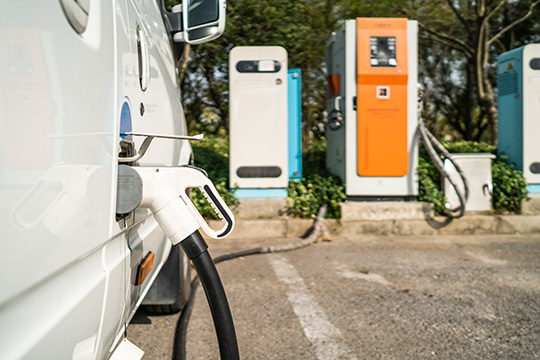
Fleet Data for Decarbonization Efforts Just Got More Accessible
Transitioning commercial vehicles to low- and zero-emission alternatives is a centerpiece of the nation's clean energy goals. But fleet owners, operators, and manufacturers require data to guide decarbonization decisions. Enter FleetREDI: NREL's Fleet Research, Energy Data, and Insights tool. FleetREDI is the first secure online portal designed to give industry and government partners access to high-resolution, anonymized commercial vehicle data—and quick-turn, customized recommendations—to guide widespread fleet decarbonization.
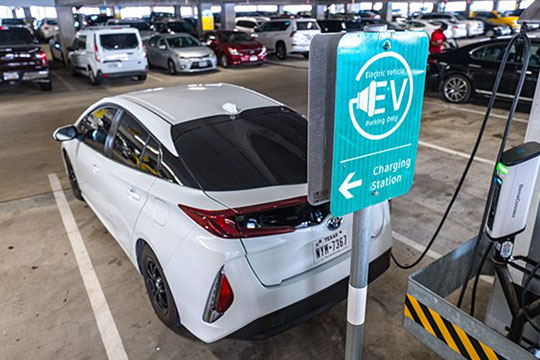
Athena Zero-Emissions Vehicles Project Aims To Electrify Airports, De-Risk Investments
The Athena Zero-Emissions Vehicles (Athena ZEV) project aims to electrify transportation and de-risk airport investments, initially focusing on rental cars. Funded by the U.S. Department of Energy's (DOE's) Vehicle Technologies Office, the NREL-led project was officially launched in August at Dallas-Fort Worth International Airport. Researchers will develop strategies to minimize charging costs, maximize rental car turnaround times for customers, and consider the electrical system upgrades required to accommodate future electric vehicle (EV) charging loads in a way that minimizes cost and reduces negative impacts on the electric grid. The technology solutions and tools developed for Athena ZEV will be widely replicable and transferrable to other airports to accommodate rapid vehicle electrification.
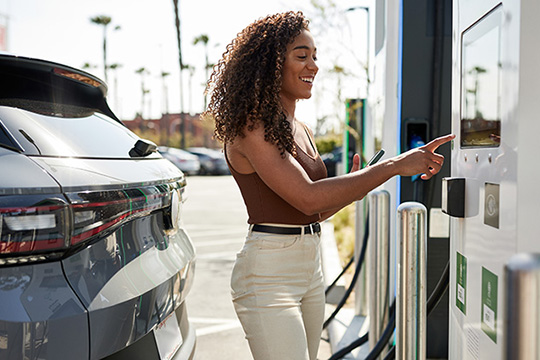
NREL Collaborates To Improve the EV Charging Experience
As more people adopt EVs, they'll need reliable and easy-to-use charging stations on roadways and in their communities. Enter the National Charging Experience Consortium (ChargeX Consortium), a new multiyear Joint Office of Energy and Transportation (Joint Office)-funded collaboration between NREL, Argonne National Laboratory, and Idaho National Laboratory to address urgent challenges with the EV public charging experience. NREL's participation in the ChargeX Consortium supports the Joint Office's mission to develop a high-quality, electrified, national transportation network.
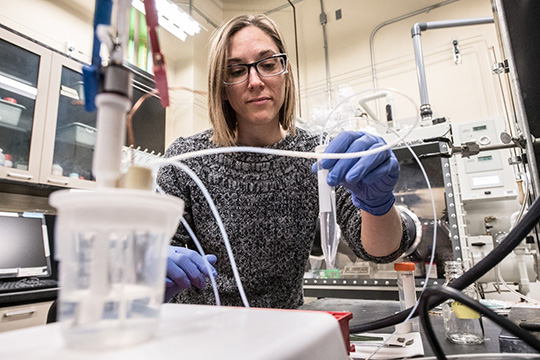
Partnership Scales Novel Hydrogen Fuel Storage Solution for Drones
A new yearlong collaboration between NREL and Honeywell Aerospace is prototyping and supporting the commercialization of a novel cartridge-based hydrogen fuel storage solution for electric uncrewed aerial vehicles, also referred to as drones. The project, Fuel Additives for Solid Hydrogen Carriers in Electric Aviation, is a new hydrogen carrier technology developed at NREL within DOE's Hydrogen Materials Advanced Research Consortium Energy Materials Network. This work supports the decarbonization of the aviation sector and the creation of high-tech jobs.
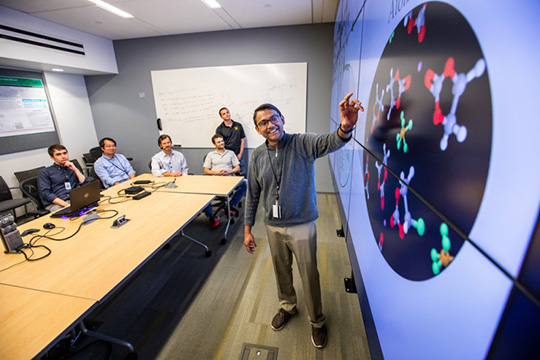
Full Speed Ahead: Modeling a Faster Future for Lithium-Ion Batteries
From race car drivers to battery engineers, human nature drives us to push the boundaries of speed, performance, and efficiency in pursuit of excellence. Researchers at NREL are applying this determination and focus to optimize lithium-ion batteries for faster EV charging. As part of an article published by Nature Energy, our pioneering scientists unveil new techniques to mitigate fast charge challenges by predicting and preventing lithium plating.
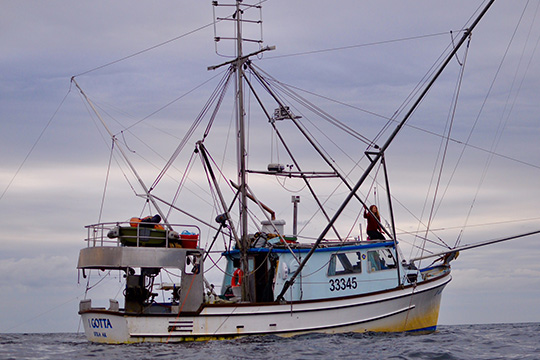
With Help From NREL, Battery-Electric Fishing Vessels Are Coming to Alaska
This spring, the fishing community of Sitka, Alaska, will witness the deployment of one of Alaska's first small, low-emissions commercial fishing vessels—powered by a unique hybrid battery-diesel system developed in partnership with NREL and Sandia National Laboratories. For Sitkans, it marks just the beginning of a wider shift to low- and zero-emission commercial fishing vessels.
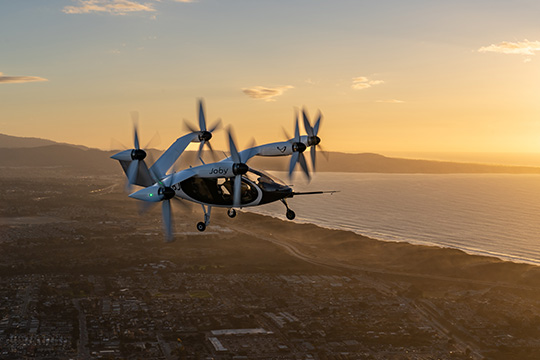
Green Ride-Hailing Flight Services Spotlighted in New Partnership
NREL conducted a detailed life cycle analysis of Joby Aviation's electric vertical takeoff and landing aircraft to highlight the environmental impact of the company's future aerial ride-hailing service. The results of the partnership were published as a book chapter, which serves as a model for conducting life cycle analysis for the larger electric vertical takeoff and landing aircraft industry.
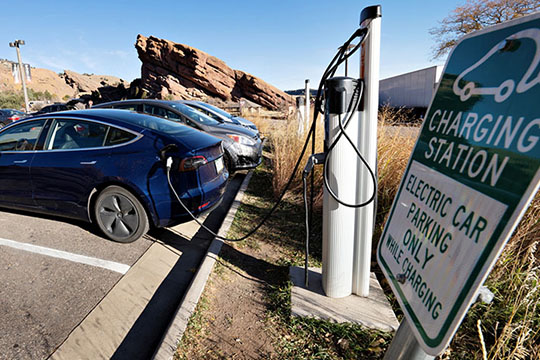
Modeling Delivers County-Level Electric Vehicle Charging Data, Informs Grid Planning
The plan for supporting EV infrastructure—where, when, and how to deploy EV chargers and upgrade the power grid—is a complex and moving target. An NREL study is pinning down that target with first-of-its-kind data and modeling that enable codesign of transportation and electricity systems. The study's county-level hourly load profiles provide the specificity needed to understand potential EV loads in utility territories across the nation.
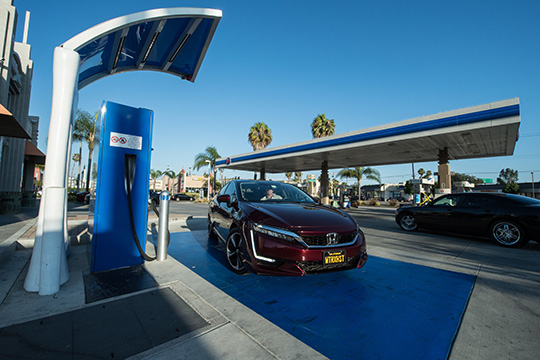
Predictive Model Could Improve Hydrogen Station Availability
Consumer confidence in driving hydrogen-fueled vehicles could be improved by having station operators adopt a predictive model that helps them anticipate maintenance needs. NREL researchers posit that station operators can use hydrogen station prognostics health monitoring to reduce the frequency of unscheduled maintenance at hydrogen stations and increase the frequency of preventive maintenance. The model calculations can thereby lower maintenance costs and make hydrogen stations more reliable.
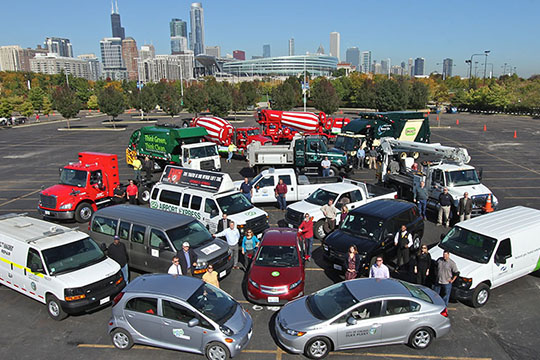
Clean Cities: 30 Years of Acting Locally To Generate National Impact
New investments are helping pave the road toward decarbonizing U.S. transportation systems—following a trail blazed 30 years ago by people devoted to creating a foothold for sustainable transportation. DOE established the Clean Cities Coalition Network in 1993 to boost the country's economic vitality, energy security, and quality of life through clean transportation. Today, coalitions transform transportation systems at the local level, drawing on technical assistance, data, and tools from DOE's national laboratories, including NREL.
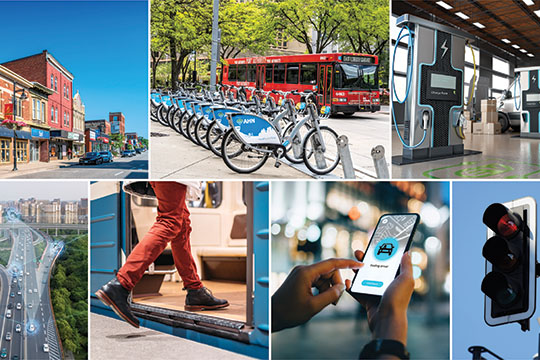
Researchers and Experts Chart the Future of Sustainable Mobility Systems
NREL transportation researchers recently identified six critical research priorities to ensure that the mobility systems of the future are efficient, affordable, safe, and accessible for all. These insights were at the center of a 2-day workshop where thought leaders from industry, government, and academia discussed the challenges—and opportunities—that should be prioritized to make sustainable transportation systems a reality.
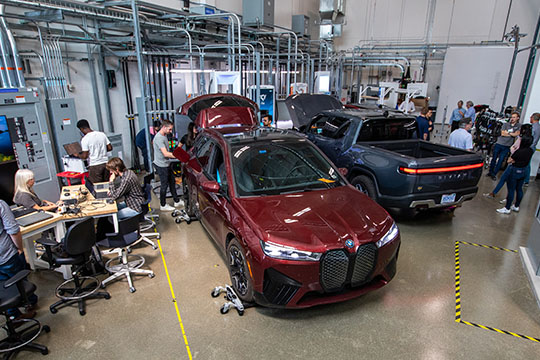
Energy Systems Integration Facility Celebrates 10 Years of Furthering Electric Vehicle Innovations
NREL is celebrating 10 years of its groundbreaking Energy Systems Integration Facility (ESIF), which is dedicated to accelerating the efficient transition to future energy systems that are secure, resilient, reliable, affordable, and clean. The ESIF supports research into emerging energy systems and the links among them, which includes helping researchers understand how EVs can best be integrated with the larger utility grid. Focus areas include new and more powerful charging methods, smart systems to manage load demand, and charging station cybersecurity. EV research at ESIF aims to scale up the decarbonization of our transportation system both safely and reliably.
Get To Know Our Team: Sarah Cardinali

A conversation with Sarah Cardinali, who leads NREL's Technical Assistance for Clean Transportation group.
What does your work focus on?
I lead our technical assistance work across multiple clients, including the U.S. Department of Energy's Vehicle Technologies Office, Clean Cities, the Joint Office of Energy and Transportation, and other federal agencies. Technical assistance is essentially problem-solving for states, communities, fleets, and other stakeholders who are considering adopting alternative fuel vehicles, like electric and hydrogen-fueled cars. This includes making sure the right technical experts at NREL are helping communities break down barriers to successful implementation of advanced transportation technologies, depending on their local needs and concerns. We work across all fuel types and vehicle classes, from light-duty passenger cars to heavy-duty trucks and off-road vehicles.
What single mobility challenge would you say we need to prioritize in the next 5 years?
We need to solve the real-world, on-the-ground issues arising from adopting zero-emission vehicles. We're experiencing what I've heard termed "the messy middle." As we transition from predominantly gasoline-fueled vehicles to predominantly electric vehicles, there are a lot of questions. How do states and communities make sure they have enough (but not too much) charging infrastructure? How do drivers get access to hydrogen fuel when there's no infrastructure in their area? Helping fleets, communities, and stakeholders work through challenges like these is a huge part of smoothing this transition process.
Why does sustainable mobility matter?
If efficient, affordable, clean transportation options aren't available, then our well-being will suffer—both individually and collectively. Missing either part of "sustainable" or "mobility" is problematic. We need to be able to get where we need to go and reduce the impact of that travel on our environment as much as possible.
Must Reads
NREL Model Provides Insights on a Decarbonized Transportation Future
The future of transportation may be unpredictable, but NREL's TEMPO: Transportation Energy & Mobility Pathway Options model can help us explore it. A new study published in Nature Communications takes a novel approach to transportation decarbonization by simulating thousands of such transportation futures under a range of possibilities to guide decision-making and energy system planning. Although no "silver bullet" exists, results point to multiple levers to achieve deep decarbonization, including the crucial role played by a rapid and widespread transition to zero-emission vehicles.
Electric Road Trips: Coming to a National Park Near You
National parks in the Western United States draw more than 80 million visitors each year, most of whom rely on personal cars to make these long-distance road trips. How can we ensure EV drivers have access to fast charging infrastructure needed to visit these often remote locations? NREL's unprecedented high-resolution analysis addresses this issue and what infrastructure will be needed by 2030 to enable seamless travel to and from our national parks.
Multi-Institutional Study Presents an Energy Justice Framework for Renewables
As energy transition innovations such as solar panels, wind turbines, and EVs gain widespread use, their intent to enhance energy quality and reduce negative energy impacts can sometimes create or exacerbate injustices. Using case studies from Los Angeles and Mexico, the authors of this NREL-led study present a framework in Nature Energy to center justice in energy transition innovations and show how this framework can help us both learn from the past and navigate these complexities in current and future projects.
Multiscale Dynamics of Charging and Plating in Graphite Electrodes Couples Operando Microscopy and Phase-Field Modeling
Graphite anode materials are common in EV batteries due to their low cost and favorable properties, but they are still susceptible to a variety of degradation mechanisms, including lithium plating. Using operando microscopy and phase-field modeling, this study in Nature Communications visualizes and uncovers mechanisms behind such degradation—providing new insights for developing advanced fast charge protocols that improve the performance and lifetime of these batteries.
Did You Know?
EVs that use electricity produced from sources such as coal still emit fewer emissions than conventional vehicles with internal combustion engines. The exact emissions comparison between EVs and gasoline-powered vehicles is dependent on the electricity sources in individual states. But even in states where more electricity is produced from emissions-heavy sources than low-polluting and renewable ones, EVs are still cleaner than gasoline-powered vehicles! On the DOE Alternative Fuels Data Center website, find out how much an EV could reduce your emissions.
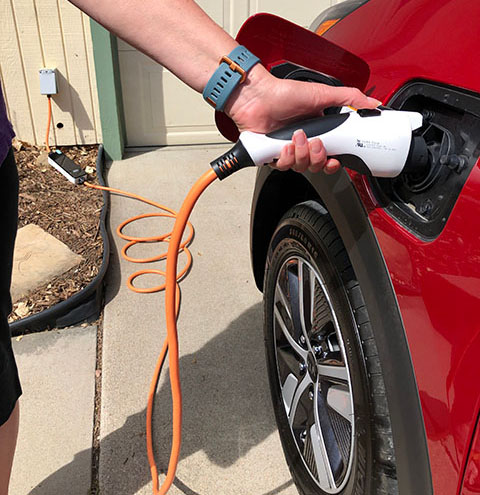
In the News
Electric Vehicle Sales Are Up, and E-Bikes Top the List
9News interviews Andrew Duvall
E-bike sales are booming—they're even outselling car-sized EVs. In addition to enjoying exercise and fresh air, e-bike riders are also reducing emissions by replacing their overall driving. E-bike programs at NREL and the Colorado Energy Office revealed that about 30% of participants' e-bike trips replaced a car trip, and participants preferred e-biking when trips were between 1 and 4 miles.
Electric Big Rigs Are Going Farther and Charging Faster
Canary Media features NREL's Decarbonizing Medium- and Heavy-Duty On-Road Vehicles: Zero-Emission Vehicles Cost
Analysis report
Increasing range, quicker charging speed, and features such as regenerative braking are making electric trucks a highly appealing option to reduce trucking emissions. Although more expensive upfront than diesel vehicles, they're cheaper to maintain long-term and can soon become comparable in cost to diesel trucks in the United States.
U.S. Team Delivers Open-Source Rail Freight Decarbonisation Tool
The Engineer quotes Jason Lustbader on ALTRIOS
NREL and partners' Advanced Locomotive Technology and Rail Infrastructure Optimization System (ALTRIOS) tool lets users simulate real-world impacts and expenses of rail decarbonization technologies like hydrogen, biofuels, and batteries using models of trains and rail infrastructure. ALTRIOS will help the rail sector work toward decarbonization over time in both freight and passenger rail.
California EV Company Fisker Will Adopt Tesla's Charging Network by 2025
United Press International features NREL's The 2030 National Charging Network report
Several automakers are partnering with Tesla to use the Tesla EV charging network. Additionally, seven major automakers have announced a plan to build a nationwide network of 30,000 EV charging stations by 2030. Even more will be needed to support the number of EVs expected to be on the road by that year.
User Call for Advanced Distribution Management System Test Bed Vehicle-Grid Integration Use Cases
NREL is accepting proposals from external research partners to identify projects that require using NREL's Advanced Distribution Management System Test Bed capability for vehicle-grid integration use cases. The final day to submit a proposal for the Advanced Distribution Management System User Call is Jan. 26, 2024. Partners interested in evaluating vehicle-to-grid applications for distribution systems are encouraged to submit.
Share
